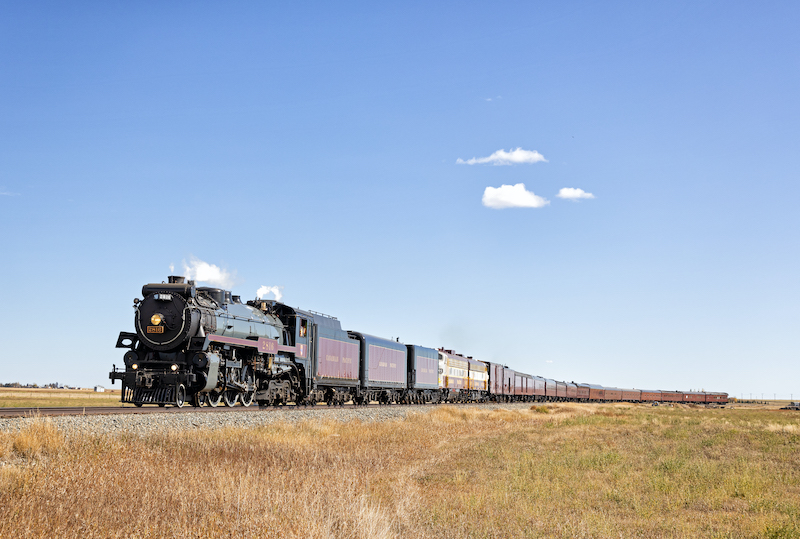By Justin Franz
LETHBRIDGE, Alberta — Canadian Pacific 4-6-4 2816 hit the main line last week as one of the world’s most advanced main line steam locomotives thanks to the installation of a new Positive Train Control system.
While other steam locomotives have the U.S.-mandated safety technology — most notably Union Pacific 4-8-8-4 “Big Boy” 4014 and Santa Fe 4-8-4s 2926 and 3751 — the system aboard 2816 allows the locomotive to operate on PTC territory without a diesel helper. The new system was tested during a two-day run between Calgary and Lethbridge, Alberta, last week and sources close to the CPKC steam crew said it was a success. That triumph will allow the H-1b class Hudson to operate on American rails next spring on its way to Mexico City as part of CPKC’s ambitious “Final Spike Steam Tour” set to depart Calgary on April 14, 2024. The tour will celebrate the first anniversary of the Canadian Pacific – Kansas City Southern merger.
Ever since the federal government mandated that Class I railroads install PTC on most routes, main line steam operators have been trying to figure out how to make the system work aboard a steam locomotive. In 2021, UP installed a system called “LeaPTC,” which utilizes computers and equipment in a trailing diesel and links it to a terminal in the steam locomotive cab. The terminal displays a route map that is continuously updated with speed restrictions, signal indications, work zone locations and other information. In an emergency, LeaPTC can activate the train brakes on the steam locomotive. But now CPKC has put all of that technology directly into the steam locomotive.
In order to test the system, the railroad turned its Aldersyde Subdivision into a test track of sorts. While the 118-mile line is “dark territory” (meaning it does not have signals and is operated using track warrants), CP was able to simulate what would happen if the locomotive went beyond its limits. As part of the test, CP also put together a consist similar to the one the locomotive will take to Mexico. Behind 2816 were two auxiliary water tenders (including one borrowed from Southern Pacific 4-8-4 4449), two F-units and 15 cars.
Locomotive 2816 was built in December 1930 by the Montreal Locomotive Works and worked for the CP until the end of steam in 1960. It was then purchased by F. Nelson Blount for display at Steamtown U.S.A. In 1998, CP purchased the locomotive back from Steamtown and restored it in Vancouver, B.C. It returned to service in 2001 and ran for about a decade before being stored in Calgary. After CP announced its plans to merge with KCS, President and CEO Keith Creel said 2816 would be put back into service to celebrate. The locomotive returned to service in June and it’s made a number of test runs since.



